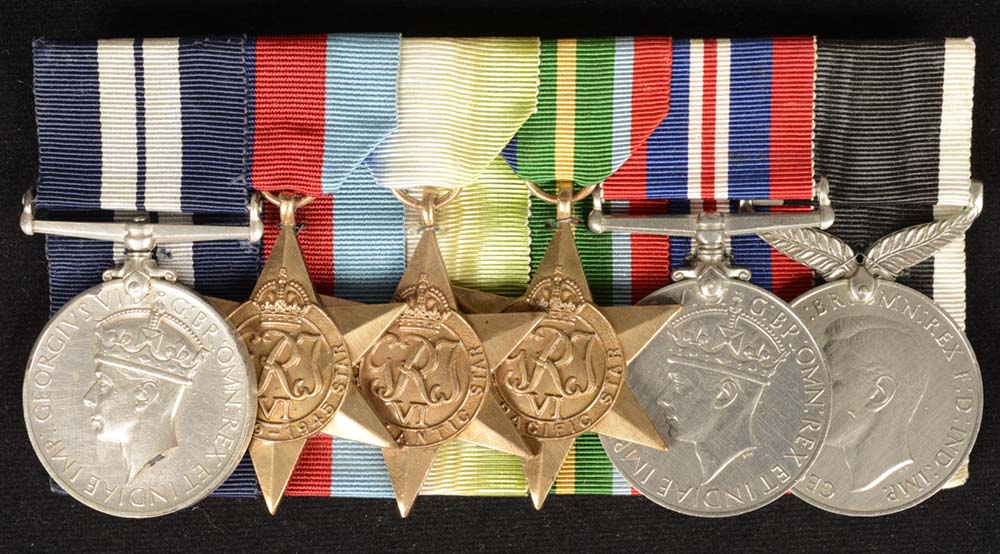

Display No. 14K
DORSET, Allan Maxwell
Allan ‘Max’ Dorset joined the New Zealand Division of the Royal Navy in 1937 as a Boy Seaman 2nd Class. His first ship was the cruiser HMS Leander. At the outbreak of the Second World War, Dorset was on board HMS Achilles which was called to patrol the Pacific and Atlantic Coasts of South America for German vessels and was subsequently involved in the Battle of the River Plate on 13 December 1939. During the battle, ‘Dorset behaved with exemplary coolness, despite the carnage around him. He passed information to the guns and repeated their reports clearly’ for the gunnery officer’s information. He was subsequently awarded the Distinguished Service Medal (DSM) for his actions during the battle. He served aboard HMNZS Leander again from 1941 during the Solomon Islands campaign. From 1943 he served ashore in HMNZS Philomel for the remainder of the war.
After the war Dorset went to sea for the last time in the cruiser HMNZS Bellona from 1947 to 1948 at which point he changed trades and became a Leading Electrical Mechanician / Telecommunications Operator. He left the Royal New Zealand Navy in 1952. Known as Max, he was also called ‘Boy’ Dorset during his time in the service, irrespective of his age and rating, for his actions at the Battle of the River Plate.
Awarded medal(s)
Medal Description [Left to Right]:
The Distinguished Service Medal (DSM)

The Distinguished Service Medal (DSM) was instituted in 1914 for senior and junior ratings of the Navy. It was awarded for acts of bravery in the face of the enemy for which the award of the Conspicuous Gallantry Medal was not considered appropriate. It was replaced in 1999 by the New Zealand Gallantry Decoration. The ribbon has three equal stripes: dark blue, white and dark blue with a thin dark blue stripe down the centre of the white stripe.
The 1939-1945 Star
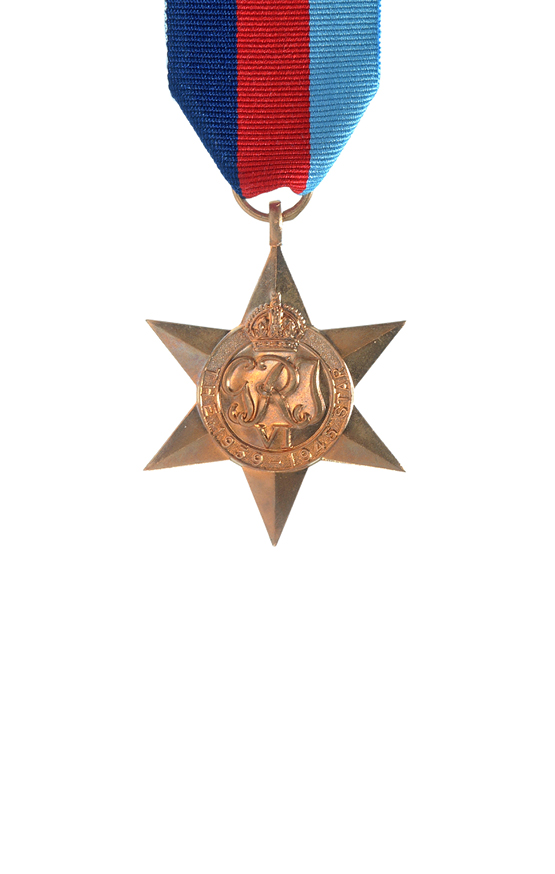
The 1939-45 Star is the first in a series of eight campaign stars instituted in 1945 to recognise service in World War Two. The ribbon has three equal vertical stripes of dark blue, red and light blue. The dark blue stripe symbolises the service of the Navy and the Merchant Navy, the red stripe symbolises the service of the Army, and the light blue stripe symbolises the service of the Air Force. The equal width bands represent the equal contributions of the three service arms towards victory. The ribbon was devised by King George VI. Two clasps could be awarded with this medal: ‘Battle of Britain’ and ‘Bomber Command’. Only aircrew would qualify for these clasps although a small number of Fleet Air Arm naval pilots flew for the air force and would be eligible for the ‘Battle of Britain’ clasp.
The Atlantic Star
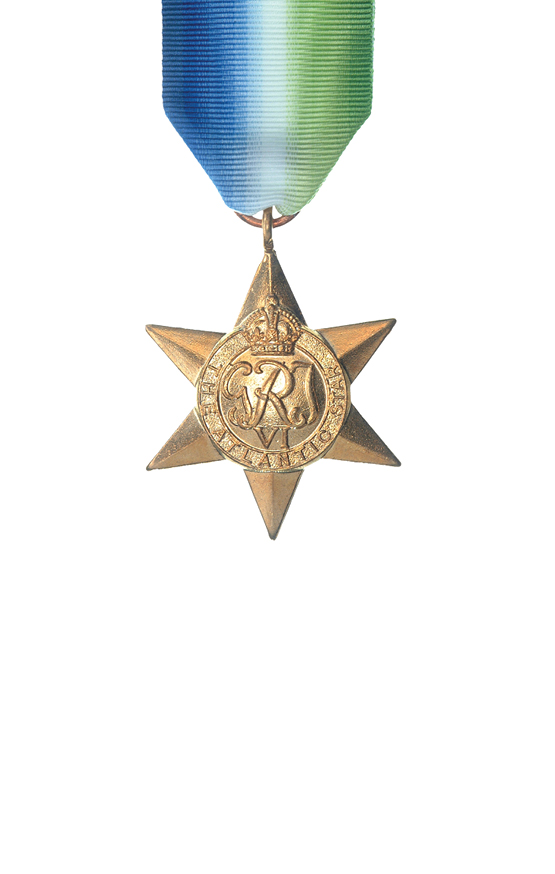
The Atlantic Star was awarded for service during the Second World War. It was instituted to commemorate the Battle of the Atlantic the longest continuous military campaign in the Second World War running from 3 September, 1939 – 8 May, 1945. Six months naval service or four months air service in the Atlantic, United Kingdom (‘home’) waters or North Russian waters was normally required. The ribbon is watered silk coloured blue, white and green, symbolising service in the oceans. Two clasps could be awarded with this medal: ‘France and Germany’ and ‘Air Crew Europe’. Personnel issued the Atlantic Star who then qualified for either the France and Germany and the Air Crew Europe Stars were awarded a clasp in respect of the second only (as only one clasp could be worn on the star).
The Pacific Star
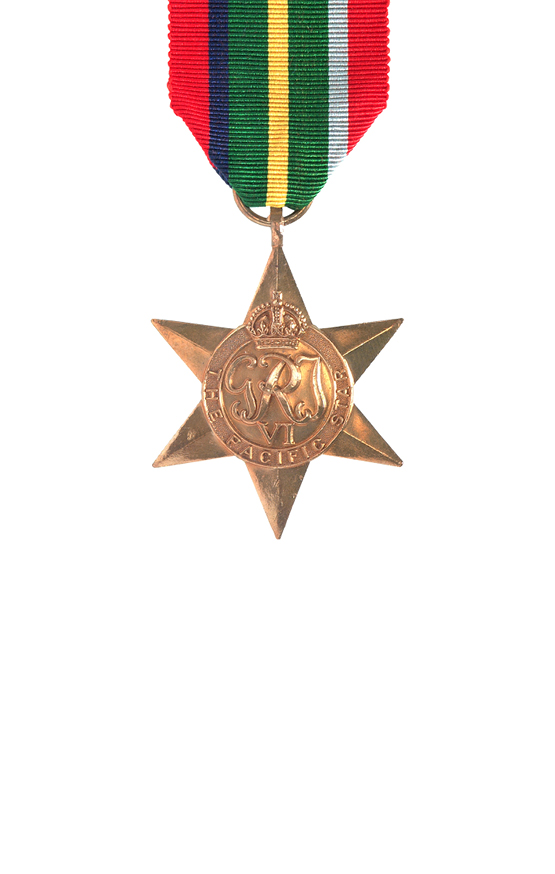
The Pacific Star was awarded in the Second World War for operational service in the Pacific between 8 December 1941 and 2 September 1945. This medal was also awarded for certain specified service in China, Hong Kong, Malaya and Sumatra: between 8 December 1941 and 25 December 1941 (for Hong Kong); between 8 December 1941 and 15 February 1942 (for China and Malaya); and between 8 December 1941 and 23 March 1942 (for Sumatra). The centre of the ribbon is dark green (symbolising the jungle) with a central yellow stripe (symbolising the beaches). On the outer edges are wide stripes of red (representing the Army), with narrow stripes of dark blue and light blue (representing the Navy and Air Force) between the stripes of dark green and red. A ‘Burma’ clasp could be awarded with this medal. Personnel qualifying for both the Pacific and Burma Stars were awarded the first star but only a clasp in respect of the second.
The War Medal 1939-1945
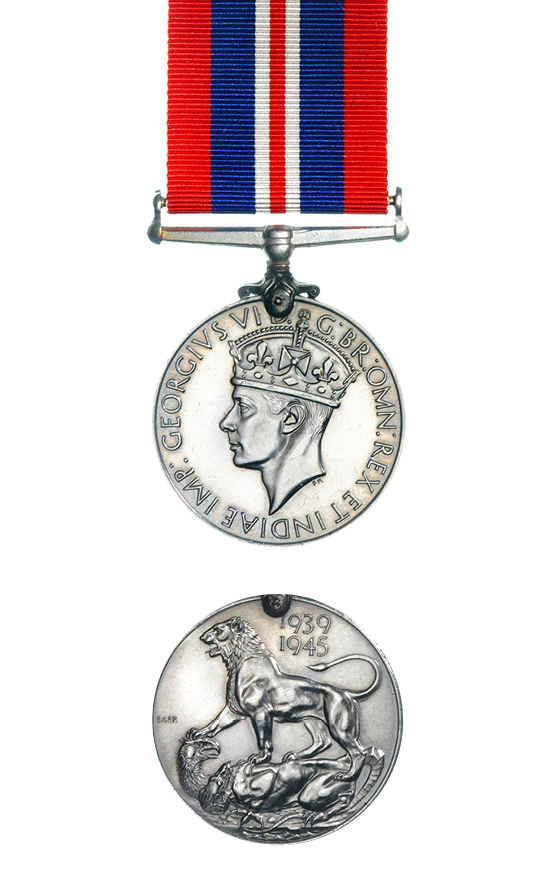
The War Medal 1939-45 was awarded across the British Commonwealth to all full-time members of the Armed Forces in the Second World War for 28 days service between 3 September 1939 and 2 September 1945, irrespective of where they were serving. The ribbon is the red, white, and blue of the (British) Union Flag. There is a narrow central red stripe with a narrow white stripe on either side. There are broad red stripes at either edge, the two intervening stripes being blue.
A bronze oak leaf on the medal ribbon denotes that the recipient was Mentioned in Despatches. To be Mentioned in Despatches a member of the armed forces had their name mentioned in an official report, written by a superior officer, and sent to a higher command. The report would describe the individual’s gallant or meritorious action in the face of the enemy.
The New Zealand War Service Medal
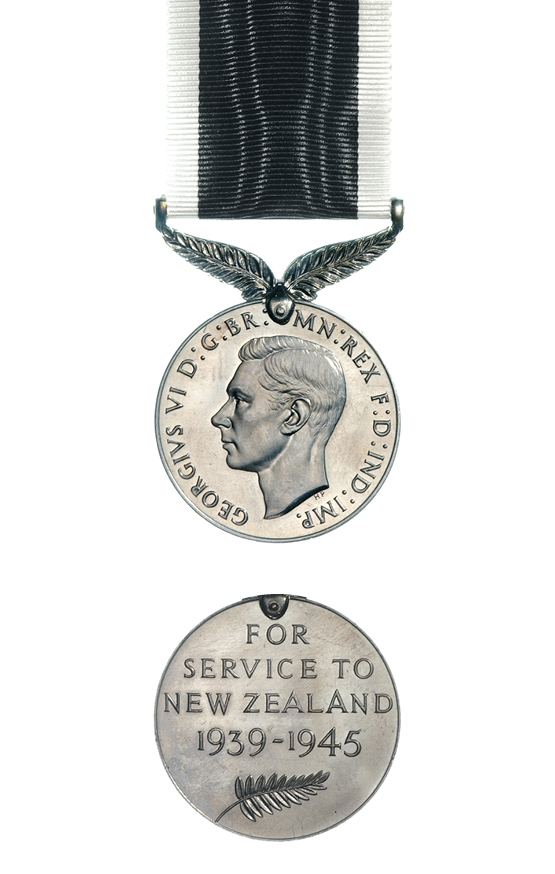
The New Zealand War Service Medal was awarded for 28 days’ full time service or six months’ part time service in the Second World War in any of the New Zealand Armed Forces including the Reserves, Naval Auxiliary Patrol Service, or Home Guard, between 3 September 1939 and 2 September 1945.

